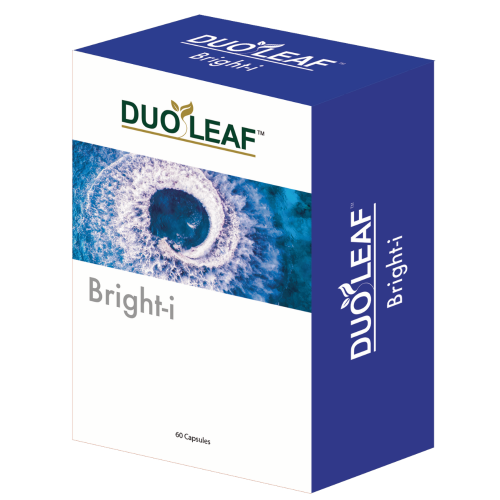RSP: Rm158
PACK SIZE: 60 Capsules
CAPSULE SOURCE: Vegetable Capsule
INGREDIENTS:
Each 780mg Capsule Contains:
Calcium Ascorbate Dihydrate – 126.11mg
(Providing 100mg Vit C)
Bilberry (Vaccinium Myrtillus) Fruit Extract – 100mg
Marigold (Tagetes Erecta) Flower Extract – 50mg
(Lutemax® 2020)
(Providing Lutein -10mg & Zeaxanthin -2mg)
Grape (Vitis Vinifera) Seed Extract – 50mg
Carrot (Daucus Carota) Root Extract – 30mg
(Providing 5000IU Vitamin A)
Zinc (as Zinc Bisglycinate Chelate) – 15mg
Copper (as Copper Gluconate) -2mg
Vitamin E – 50IU
DIRECTION/ DOSAGE:
1 Capsule each time with meal, once daily.
REGISTRATION NO: MAL22106060NC
JAKIM HALAL


Lutemax® 2020 is a lutein and zeaxanthin (including meso-isomer) enriched product obtained from Marigold flowers (Tagetes erecta L).
WHY CHOOSE LUTEMAX 2020?
Award-winning and globally recognized, Lutemax 2020 is a patented extract containing all three nutritionally relevant macular carotenoids—lutein, RR-zeaxanthin, and RS (meso)-zeaxanthin— in the same 5:1 ratio as found in the diet.
Naturally derived from marigold flowers, Lutemax 2020’s unique combination of carotenoids is backed by multiple clinical studies.
Lutemax 2020 is a branded ingredient containing lutein and zeaxanthin isomers, which are carotenoid antioxidants found in the eye. Here are some studies and references that support the use of Lutemax 2020:
- Improvement in Visual Performance: One study published in the Journal of Ophthalmology demonstrated that supplementation with lutein and zeaxanthin improved visual performance, including contrast sensitivity and glare disability, in subjects with healthy eyes and those with age-related macular degeneration (AMD). Ma et al., 2012. “Effect of Lutein and Zeaxanthin on Macular Pigment and Visual Function in Patients with Early Age-Related Macular Degeneration.”
- Macular Pigment Optical Density (MPOD): Research has shown that supplementation with lutein and zeaxanthin increases macular pigment optical density (MPOD), which is associated with reduced risk of AMD. This effect was demonstrated in a study published in the Journal of Clinical Biochemistry and Nutrition. Aoki et al., 2017. “Clinical Effect of 8-Week Intake of Lutein on Macular Pigment Optical Density and Visual Function in Patients with Early Age-Related Macular Degeneration.”
- Protection Against Blue Light: Lutein and zeaxanthin are known to filter harmful blue light, which may help protect the eyes from damage caused by excessive exposure to screens and artificial light. A study published in the journal Foods discusses the role of these carotenoids in protecting the retina against blue light-induced oxidative stress. Manikandan et al., 2020. “Lutein and Zeaxanthin: Protecting the Eyes from Oxidative Stress Nutrients and Blue Light-Induced Damage.”
- Antioxidant and Anti-inflammatory Properties: Lutein and zeaxanthin possess antioxidant and anti-inflammatory properties, which are beneficial for eye health. A review published in the journal Nutrients discusses the role of these carotenoids in preventing and managing various eye conditions, including AMD and cataracts. Chew et al., 2017. “Lutein and Zeaxanthin—Food Sources, Bioavailability and Dietary Variety in Age-Related Macular Degeneration Protection.”
These studies provide evidence supporting the use of Lutemax 2020 for promoting eye health, including its benefits for visual performance, macular pigment density, protection against blue light, and antioxidant properties.